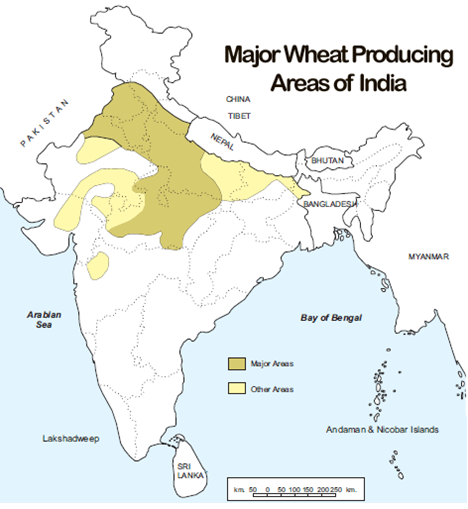Panel to assess impact of Higher temperature on Wheat Crop
In 2023, the winter rains were above normal only in the Himalayan regions. The rest of the Indian states, the major wheat-producing states received no winter rains at all! Winter rains occurring due to western disturbances caused over the Mediterranean Sea are essential for growing wheat crops in winter. No winter rains this year are bringing adverse impacts on the wheat production of the country. The Government of India is setting up a panel to address the issues.
About the panel
The panel will look into the impacts of high temperatures on wheat crops in the country. The Agriculture Commissioner of India will lead the panel. It will have members from key wheat-producing states.
Background
Already Indian PDS system is facing wheat shortages. In 2023, wheat prices increased by 21% due to a decrease in wheat production and increasing export demands. The increasing temperature and lack of winter rains are affecting wheat production further. India may face more wheat shortages. So GoI has set up a panel to bring up solutions to the issue.
How will high temperatures affect wheat crops?
Wheat grows comfortably at 20 to 25 degrees Celsius. The wheat can germinate at a temperature range of 3.5 degrees Celsius to 35 degrees Celsius. Reproduction, growth, quality and quantity of wheat are affected largely due to high temperatures.
Month: Current Affairs - February, 2023
Category: India Nation & States Current Affairs


